For businesses, trade shows present a unique opportunity to showcase their products or services, form partnerships, and network with other industry leaders. However, hosting a successful trade show may be a challenging endeavor that demands thorough organization and coordination. Organizations can use a well-designed template to streamline the process of planning, marketing, and hosting a successful trade show.
Since a trade show entails numerous details that must be closely monitored, a comprehensive checklist is paramount. It allows you to break down the entire event timeline into manageable stages, ensuring you cover all the necessary aspects. From the planning stage to execution and feedback collection, the checklist keeps you and your team organized, reducing last-minute rushes. The framework of a checklist allows you to cross-check each task after completion. This prevents you from overlooking key elements or making mistakes that may negatively impact your trade show.
This article will explore the intricacies of organizing a successful trade show using a template. We will address the critical components of the template and provide you with a vast collection of free and editable templates in Word and PDF format for your convenience.
Free Templates
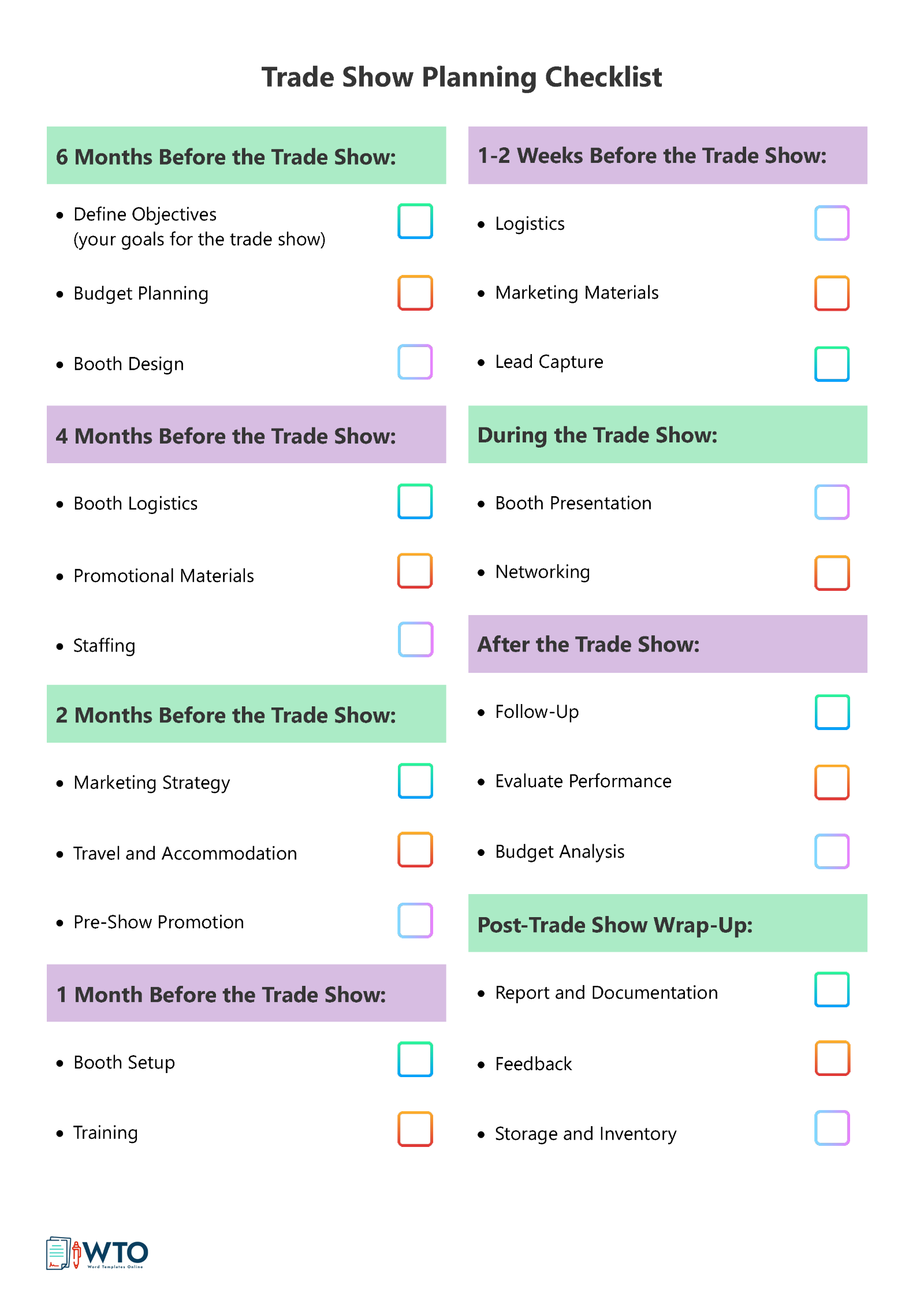
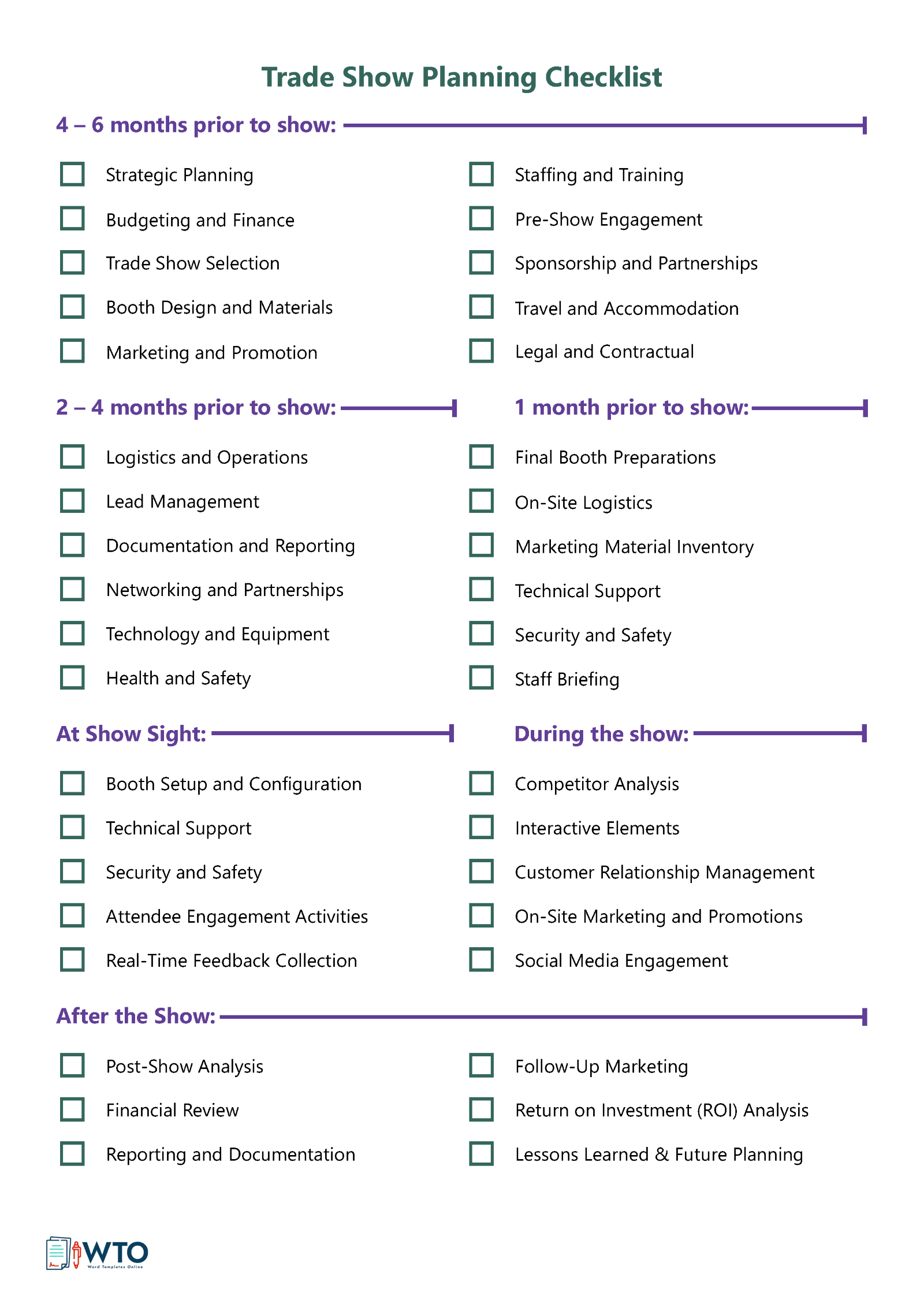
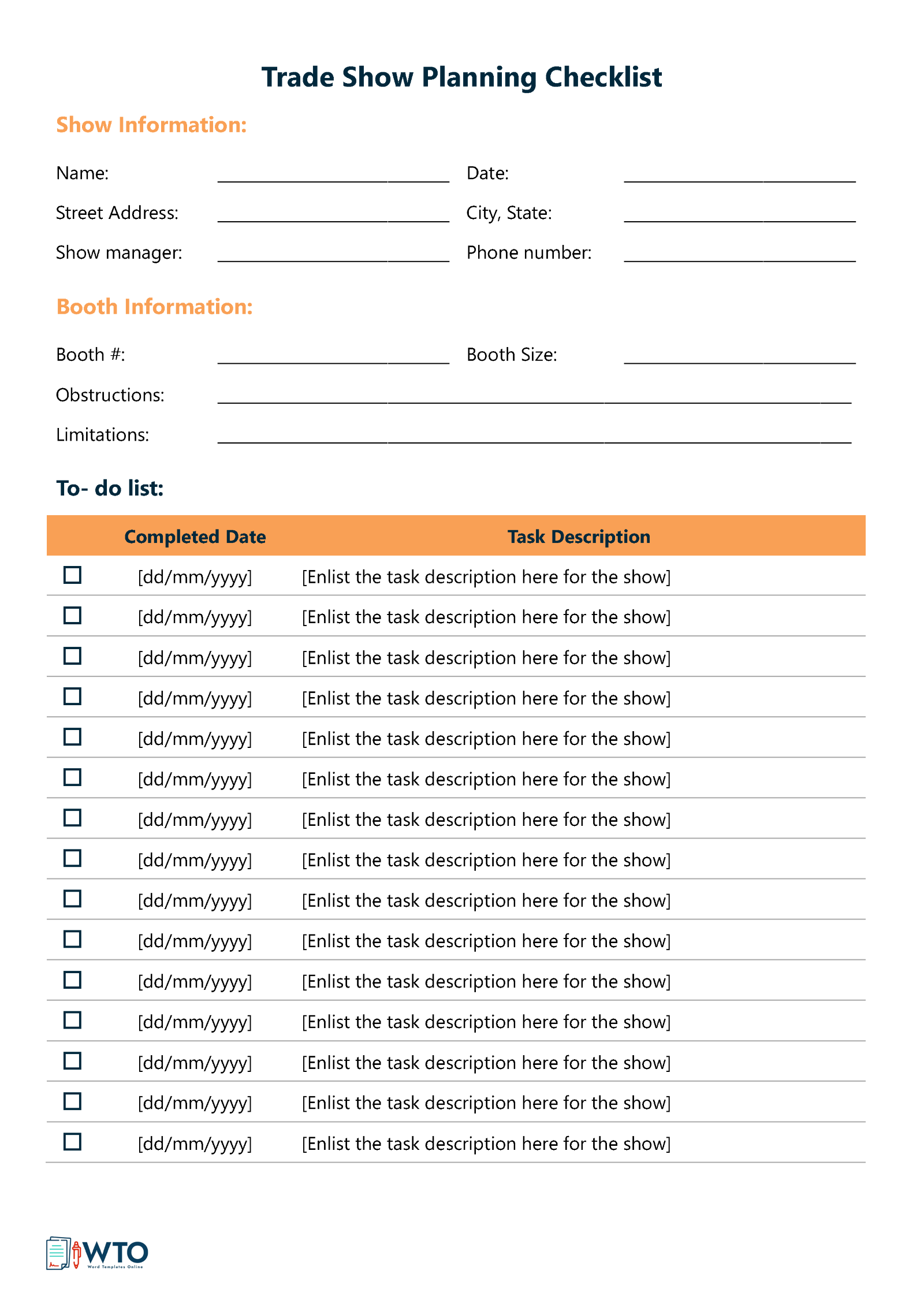
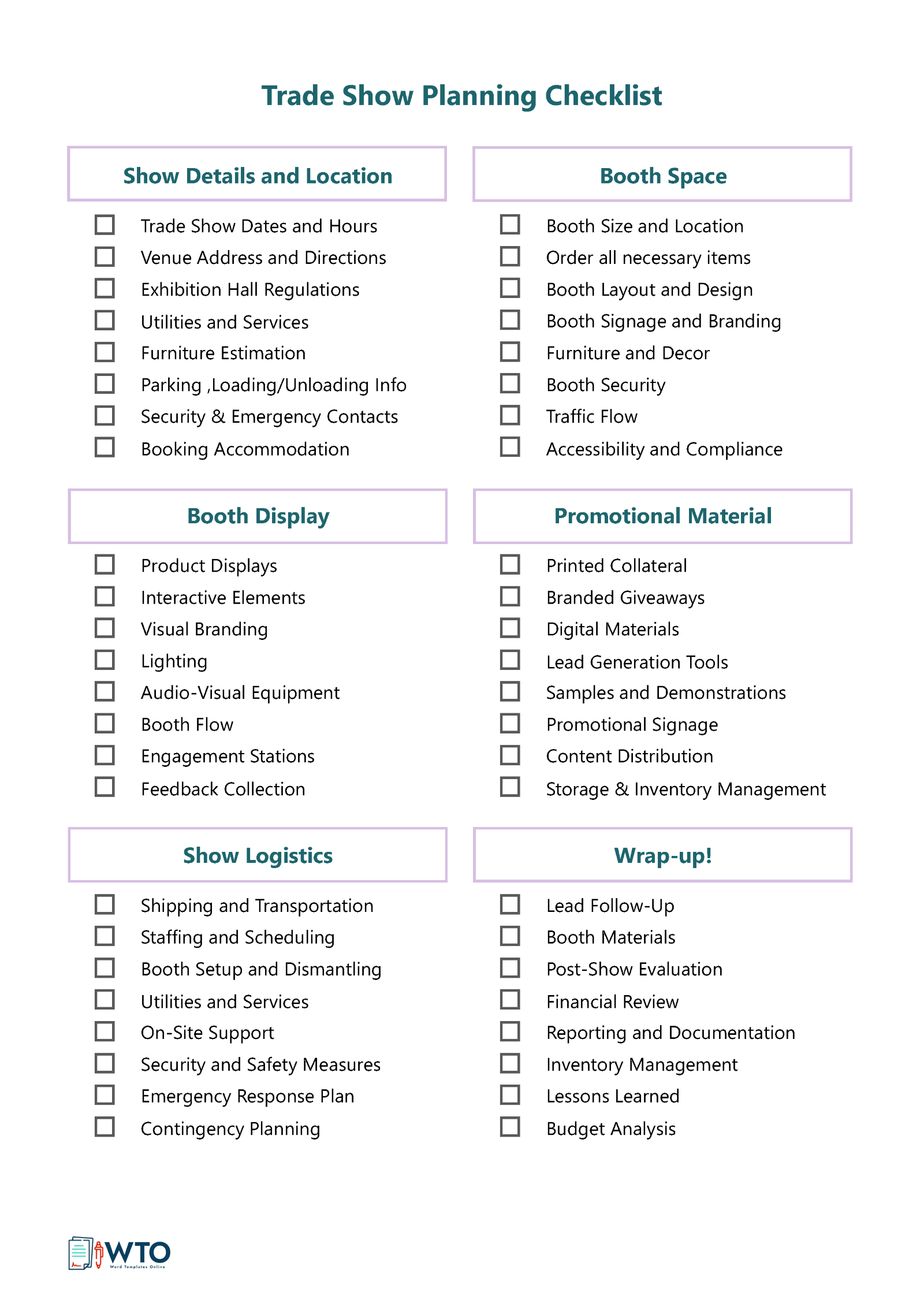
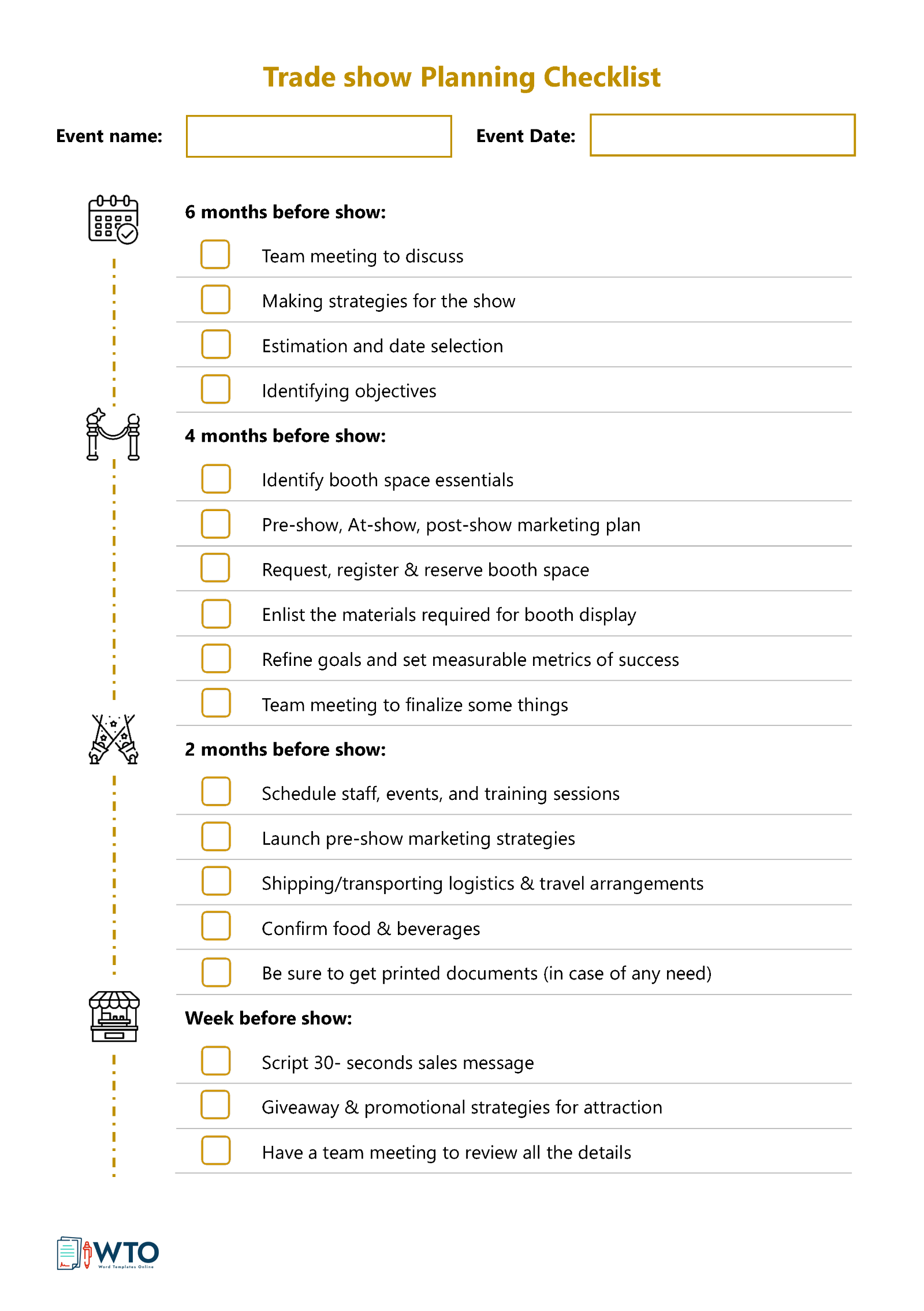
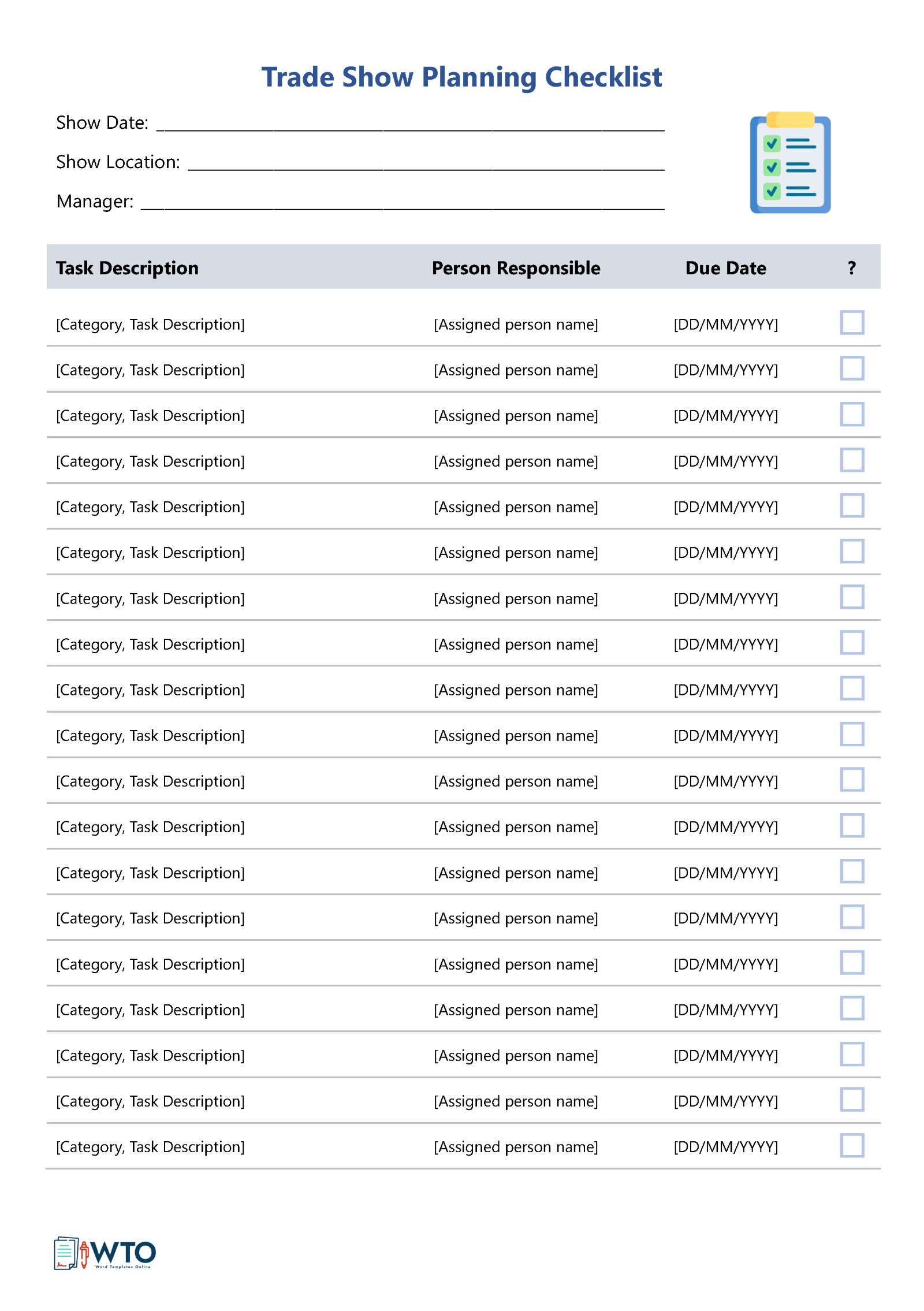
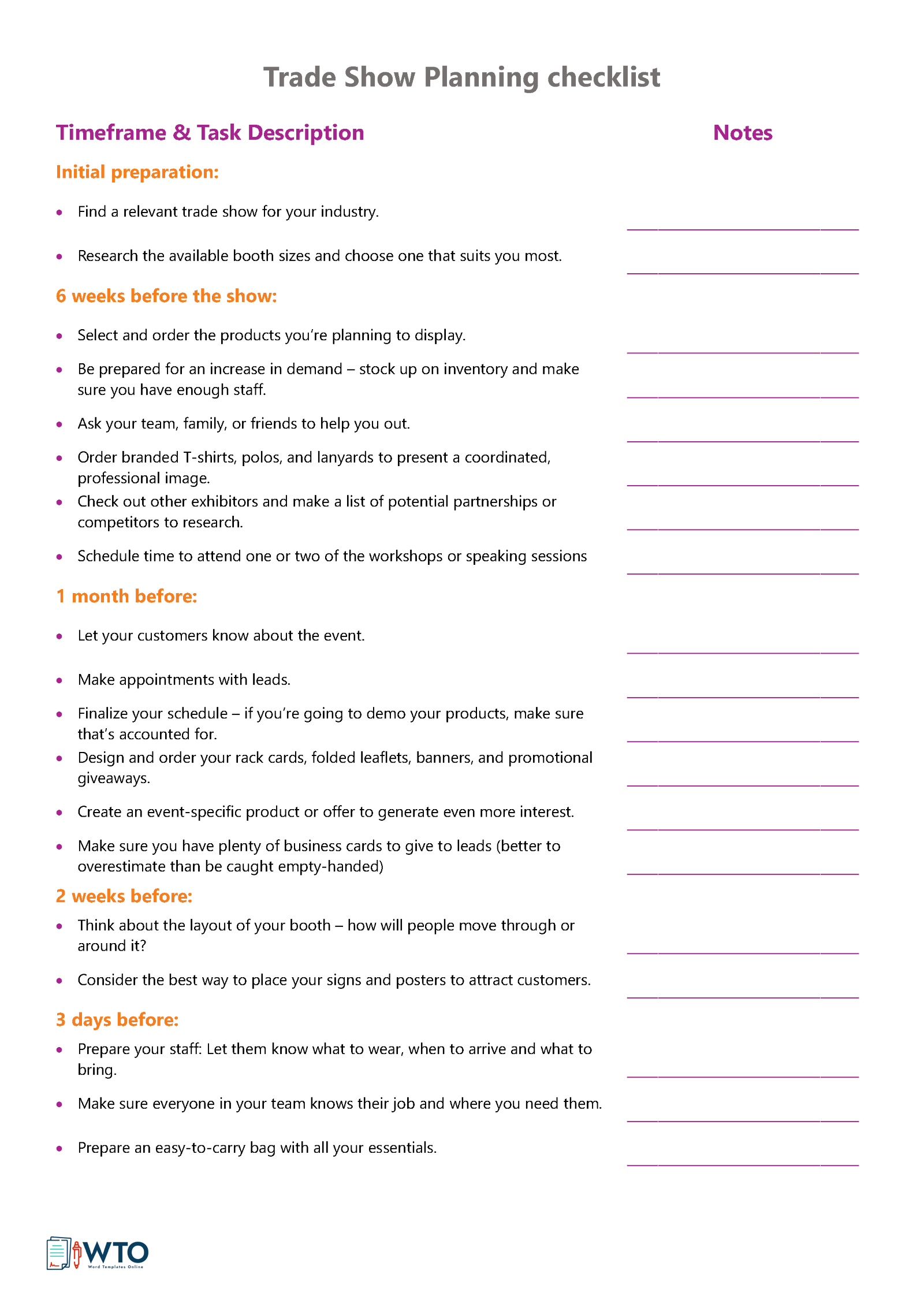
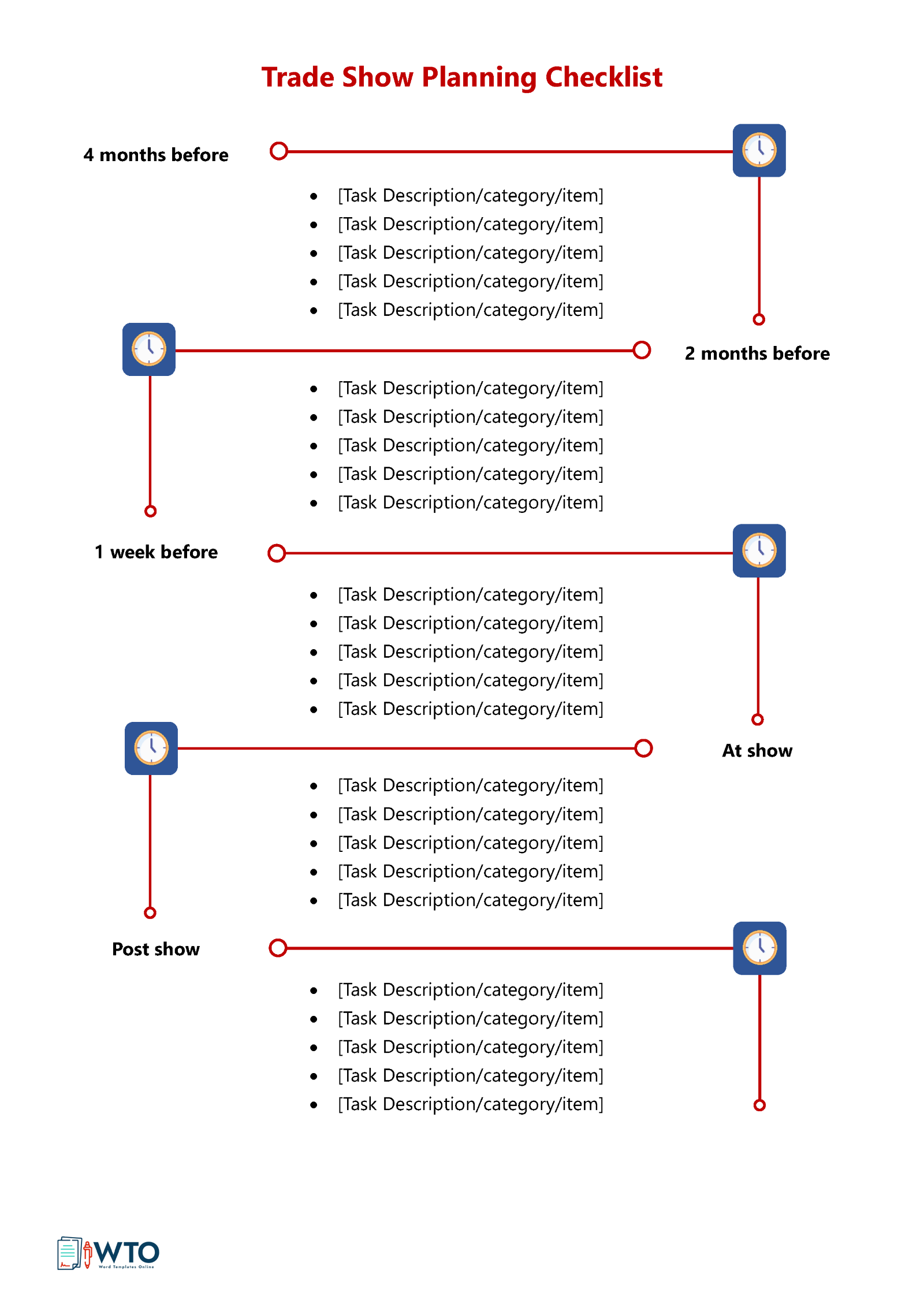
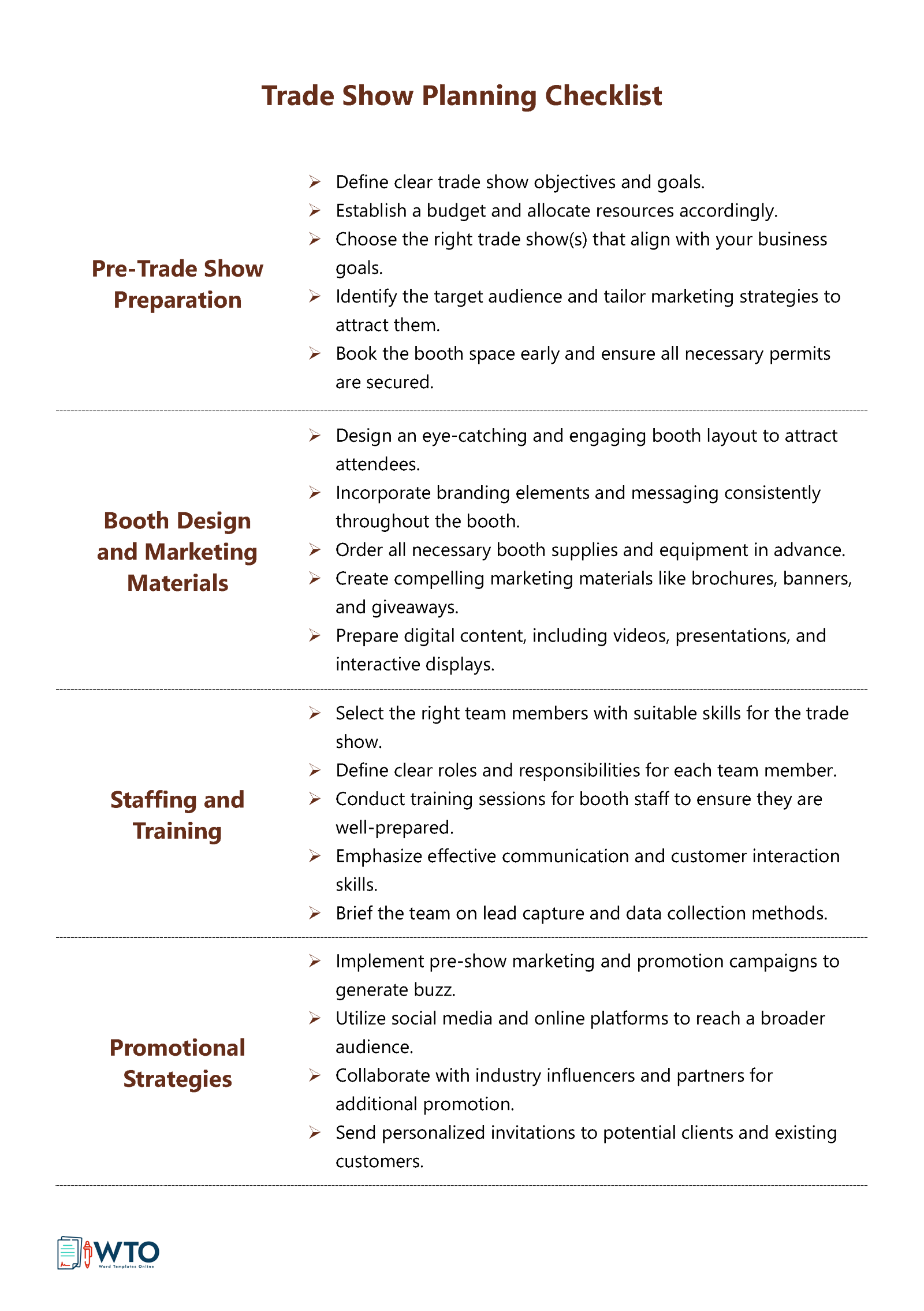
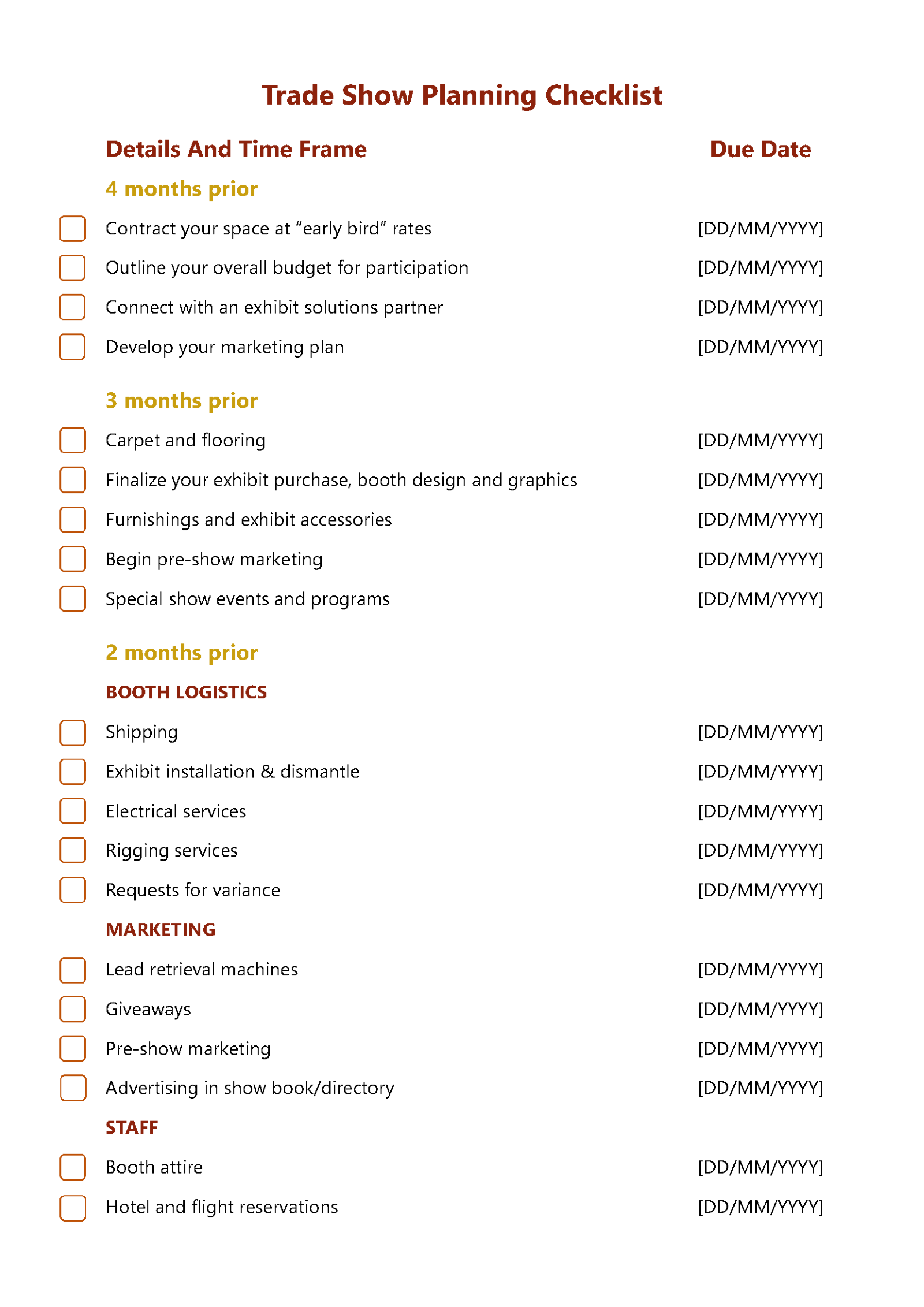
Essential Features of a Trade Show Planning Template
Each trade show is unique, and therefore, the template can incorporate different elements. However, the following components of the template ensure the success of your trade show and make for a memorable experience:
Pre-trade show preparation
The first aspect of trade show planning is specifying the event name, date, time, location, and a brief theme description. Outline the primary objectives and goals you aim to achieve through the trade show. This section of the template also has a field for establishing a budget, allowing you to allocate resources effectively. Include estimated costs for various aspects such as venue, marketing, staff, logistics, and contingencies. Select the right trade show to determine the appropriate audience for your products or services. Finally, obtain the required permits and book booth space to secure a prime location with high foot traffic.
Booth design and marketing materials
This section focuses on creating a visually appealing booth design to attract attendees. Include a floor plan that indicates booth locations and sizes. Branding elements should be consistently incorporated to ensure your products or services capture the attendees’ attention. Include details about marketing efforts and promotional materials such as brochures and banners. You may also prepare digital content such as presentations, videos, and interactive displays to enhance the booth experience.
Staffing and training
Recruit staff for the trade show well in advance of the event. Identify individuals with adequate experience, as they can represent your organization effectively. Next, conduct training sessions to familiarize them with their roles and impart practical customer interaction skills. You can then assign them specific tasks, such as registration, ushering, booth assistance, AV support, and customer engagement.
You may also brief them on data collection and lead capture methods to maximize lead generation during the event. Have your staff follow a comprehensive schedule with clearly defined shifts for on-site staff to ensure sufficient coverage during peak hours.
Promotional strategies
Promotion is crucial for attracting potential customers, generating buzz, and maximizing the impact of your trade show. Include details about digital marketing efforts such as social media campaigns and utilization of other online platforms. You may also collaborate with social media influencers and other industry professionals who can endorse your trade show to their followers. You may also create personalized invitations for potential and existing customers to maximize attendee engagement.
Logistics and travel arrangements
Well-planned logistics and travel arrangements contribute to a seamless trade show experience. This section of the template covers all logistical aspects, including transportation arrangements and accommodation options for guests and staff. Outline shipping and handling arrangements for booth materials and other equipment to ensure everything arrives at the specified time. Finally, ensure all the necessary documentation and permits are available for a stress-free trade show experience.
On-site execution
This section of the template focuses on the individual tasks to be completed during the event. Ensure all required equipment and materials are in place to guarantee no item is overlooked. Coordinate with your staff to ensure they can handle all the on-site challenges effectively.
Equip them with any necessary materials, marketing materials, and equipment. Active attendee engagement strategies and product or service presentations should be outlined in this section. It can also include methods for lead generation and collecting contact information.
Post-trade show follow-up
The event might be over, but the work does not end there. In this section of the template, focus on evaluating the show’s impact against the predefined goals and objectives. Review data on generated leads to analyze the return on your investment. You may also contact leads by sending them follow-up emails and thank-you notes to kick-start the engagement process. Finally, meet with your staff and seek their input to identify areas of improvement and lessons learned to ensure continuous growth.
Trade show evaluation and improvement
After the show, you ought to evaluate the success of the event. Develop feedback collection methods from staff and attendees to gain valuable insights. Plan for post-event evaluation by establishing metrics to measure the success of the show. Identify areas of strength and weakness to capitalize on the successful strategies and address areas that need improvement. These lessons can help improve future trade shows by utilizing more refined and practical approaches.
Frequently Asked Questions
Using a template ensures you cover all essential aspects of planning the trade show, from budgeting and logistics to marketing and post-event evaluation. It ensures the finer details that can significantly impact the success of your trade show are not overlooked. It also saves you valuable time since you do not have to create a checklist from scratch. This allows you to focus on other essential aspects of the show.
Yes, the templates can be customized to suit the unique needs and objectives of different industries and business sizes. For example, an IT trade show may have different exhibitor needs and guest expectations as compared to a trade show for showcasing health products. This allows you to develop a checklist that reflects the specific characteristics, objectives, and goals of your trade show, allowing you to tailor the event for your attendees.
Definitely! Even with prior experience, using a checklist template for planning a trade show can still be highly beneficial. This is because unforeseen challenges can arise during the show, and a well-structured template can help you develop contingency plans. Furthermore, trade shows involve numerous details, and it is easy to overlook important aspects, especially when juggling multiple tasks. Therefore, the template keeps you organized and helps identify areas of improvement.




